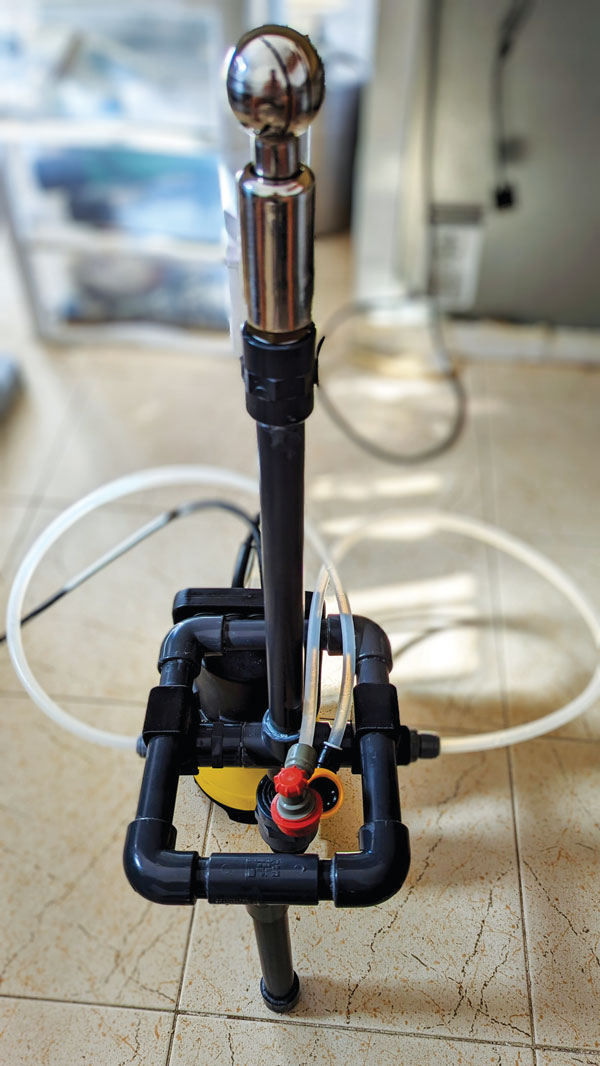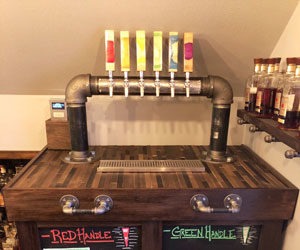DIY Keg Washer
A homebrewer’s best friend

For every passionate homebrewer, the joy of crafting the perfect beer is often accompanied by the less glamorous task of cleaning and sanitizing our equipment. In particular, kegs can be a challenge to clean thoroughly, especially if they’ve housed a particularly hoppy or yeasty brew. Enter the DIY keg washer, a game changer for homebrewers looking to streamline their cleaning process without breaking the bank.
Keg washing is crucial for ensuring the purity and taste of your beer. Residual yeast, hops, or even small particles can influence the flavor of subsequent batches, leading to inconsistent results. While commercial keg washers are available, they can be prohibitively expensive for the average homebrewer. Moreover, in regions outside of North America, these specialized tools are hard to come by. This is where the ingenuity of the DIY spirit shines.
Creating your own keg washer using a domestic pump, PVC tubes, John Guest connectors, and a zip ball is not only cost-effective but also surprisingly simple. The pump serves as the heart of the system, providing the necessary pressure to circulate cleaning and sanitizing solutions through the keg. PVC tubes, known for their durability and resistance to chemicals, are ideal for directing the flow of these solutions. The CIP (Clean-in-Place) spray ball, a versatile cleaning tool, acts as a scrubber, ensuring every nook and cranny of the keg is reached.
The assembly process is straightforward. Connect the PVC tubes to the domestic pump, ensuring a tight fit to prevent leaks. The other end of the tube should be fitted with the zip ball, which will be inserted into the keg.
The CIP (Clean-in-Place) spray ball, a versatile cleaning tool, acts as a scrubber ensuring every nook and cranny of the keg is reached.
One of the primary challenges in designing this DIY keg washer was ensuring consistent cleaning inside the input and output posts and tubes. The solution? Using two ball locks connected to the main mounting via John Guest connectors allows the pressurized liquid to efficiently clean the parts of both posts.
Once your keg is sparkling clean, the benefits are immediately apparent. Not only will your beer taste fresher and maintain consistent flavor, but you’ll also extend the lifespan of your kegs, preventing corrosion, contamination, and buildup that can compromise their integrity.
A DIY keg washer is an invaluable tool for any homebrewer that uses Corny kegs. It offers an affordable, effective solution to one of brewing’s most tedious tasks. With cleaner kegs, you’re ensuring that each batch of beer is as delicious as the last. So, why not invest a little time and creativity into building a keg washer? Cheers to innovation and the perfect pint!
Tools and Materials
- 3.3 ft. (1 m) 1-in. (25-mm) PVC pipe
- 1-in. (25-mm) PVC coupling with four outlets
- (3) PVC coupling 1-in. (25-mm) to 1-in. (25-mm) female thread
- PVC coupling 1-in. (25-mm) to 1¼-in. (32-mm) female thread (or whatever size thread the pump has on its outlet)
- (2) PVC coupling 1-in. (25-mm) male thread to ½-in. (13-mm) female thread
- (2) John Guest connector 3⁄8-in. (9.5-mm) to ½-in. (13-mm) male thread
- ~4 ft. (1.2 m) 3⁄8-in. (9.5 mm) speedfit tube
- Liquid ball-lock (or pin-lock) connector
- Gas ball-lock (or pin-lock) connector
- Submersible pump
- CIP (Clean-in-Place) spray ball with 1-in. (25-mm) male thread
- 1-in. (25-mm) PVC coupling T
- 1-in. (25-mm) PVC end cap
- (4) 1-in. (25-mm) PVC elbow coupling
- PVC adhesive
- (2) 3-D printed pieces (optional)



